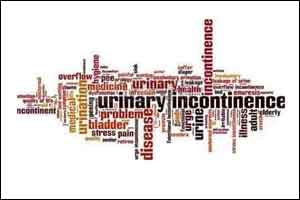- Home
- Editorial
- News
- Practice Guidelines
- Anesthesiology Guidelines
- Cancer Guidelines
- Cardiac Sciences Guidelines
- Critical Care Guidelines
- Dentistry Guidelines
- Dermatology Guidelines
- Diabetes and Endo Guidelines
- Diagnostics Guidelines
- ENT Guidelines
- Featured Practice Guidelines
- Gastroenterology Guidelines
- Geriatrics Guidelines
- Medicine Guidelines
- Nephrology Guidelines
- Neurosciences Guidelines
- Obs and Gynae Guidelines
- Ophthalmology Guidelines
- Orthopaedics Guidelines
- Paediatrics Guidelines
- Psychiatry Guidelines
- Pulmonology Guidelines
- Radiology Guidelines
- Surgery Guidelines
- Urology Guidelines
Treatment of Urinary Incontinence in Women

On an average half of adult women may experience urinary incontinence, but few of them get diagnosed and treated despite a wide range of options to address the problem because of their reservations to share their problem with treating doctor.The most common causes of urinary incontinence are damage from childbirth or surgery, genetics or changes during aging.
Types of urinary incontinence:
There are mainly three types of Incontinence-
- Stress urinary incontinence is when the pelvic floor muscles in women are too weak to support the bladder. As a result, urine leaks during coughing, sneezing or exercise. Childbirth is a common reason for weak pelvic muscles, and obesity worsens the problem.
- Urge incontinence occurs when a strong urge to urinate occurs at the wrong time or place. Urgency incontinence often does not have a single clear cause although it can sometimes happen due to neurological problems, the authors note.
- Mixed urinary incontinence typically involves aspects of both stress incontinence and urgency incontinence. Incontinence may also be caused by urinary tract infections.
Some women may get both types of incontinence at once or develop bladder problems due to a urinary tract infection.
Only about one in four women with urinary incontinence seek care, and then less than half of these patients receive treatment, doctors note in a review of available therapies published in JAMA online October 24.
“There are several barriers - the most important thing being women are embarrassed so they cope and don’t say anything,” said senior author of the review Dr. Linda Brubaker of the University of California San Diego.
Diagnosis :
The diagnosis of urinary incontinence constitutes a detailed medical history by a healthcare professional. A physical examination may be performed to assess the anatomy of the pelvic region. A test of the urine (urinalysis) should be obtained to check for evidence of infection. Avoiding diary may be used to document the amount and timing of fluid intake and urine output to aid the diagnosis. If the diagnosis remains uncertain after these initial evaluations or the symptoms do not improve after initial treatments, additional tests may be needed.
Treatment :
Treatment for urinary incontinence should be personalized based on the frequency and severity of symptoms and on individual patient preferences and goals of therapy.
- Lifestyle modifications include weight loss, adequate hydration, avoidance of excessive fluids, and regular voiding intervals that reduce urgency incontinence episodes.
- Behavioral strategies include such as reducing caffeine intake, drinking small amounts of fluid frequently rather than large amounts of fluid all at once, and scheduled voiding may reduce episodes of incontinence.
- Pelvic floor muscle exercisesinvolve repeatedly contracting the muscles of the pelvic floor to strengthen them and help control urination.
- For urgency incontinence, medications may be considered if behavioral strategies and pelvic floor muscle exercises are not effective.
- For stress incontinence, vaginal devices, including pessariesor over-the-counter inserts, may be particularly helpful if inserted prior to engaging in specific activities that trigger incontinence (such as exercise).
- Surgery or other procedures may be considered if urinary incontinence persists despite more conservative therapies which are-
- The midurethral slingis a mesh sling that is placed under the urethra in a short outpatient surgery to treat stress incontinence. It is associated with symptom improvement in 48% to 90% of women and has low rates of mesh complications (<5%).
- For treatment of urgency incontinence, injecting onabotulinumtoxin A (Botox) into the bladder wall may be effective.
- Implanted neuromodulators either in the leg or in the lower back (a process called neuromodulation) and electrically stimulating nerves may be considered.
Botox injections may also be an option for some women.
“If a woman is bothered by symptoms of leakage, then she should know that there are effective treatment options and that it is worth talking to her doctor,” said Dr. Anne Suskind, a urology researcher at the University of California, San Francisco, who wasn’t involved in the paper.
There is almost always something that can be done to help with the leakage, and it is certainly worth starting this conversation,” Suskind said by email.
Because women may be embarrassed, doctors may need to start this discussion, she added.

Disclaimer: This site is primarily intended for healthcare professionals. Any content/information on this website does not replace the advice of medical and/or health professionals and should not be construed as medical/diagnostic advice/endorsement or prescription. Use of this site is subject to our terms of use, privacy policy, advertisement policy. © 2020 Minerva Medical Treatment Pvt Ltd